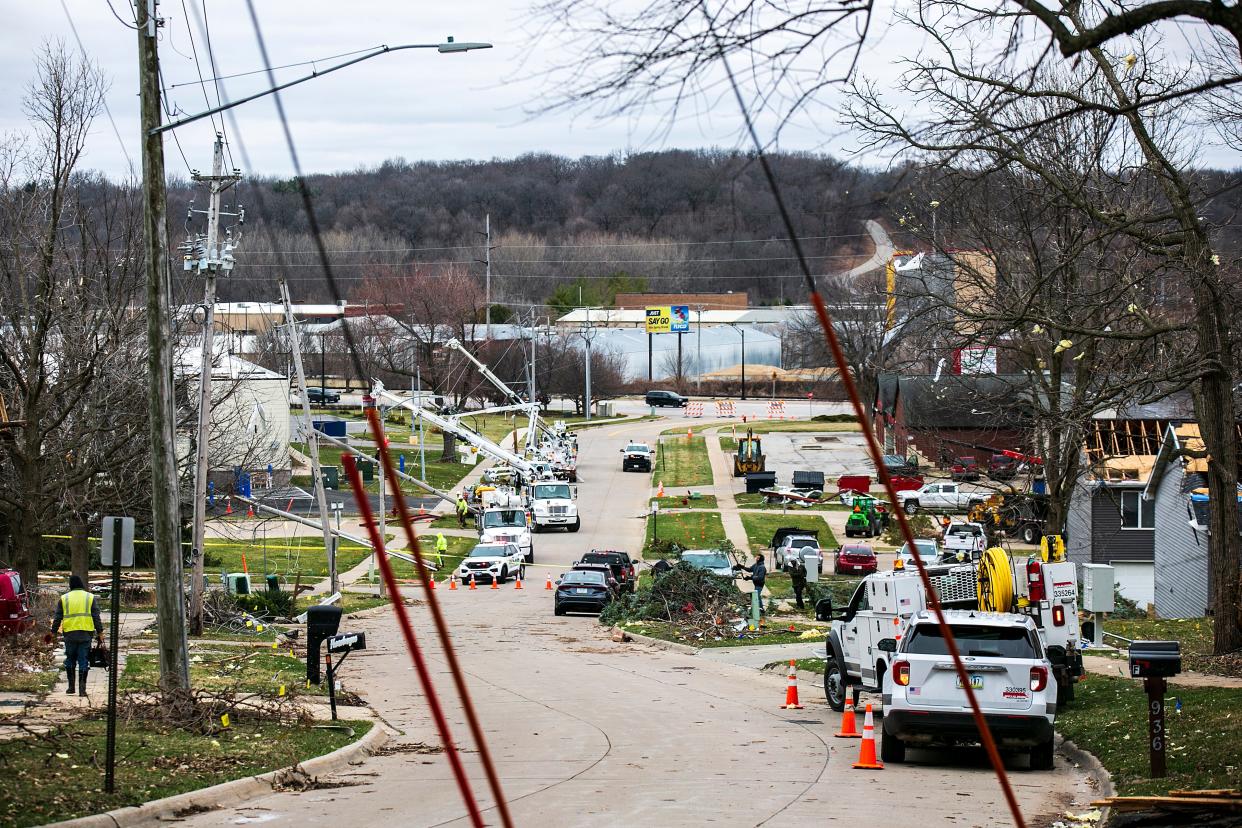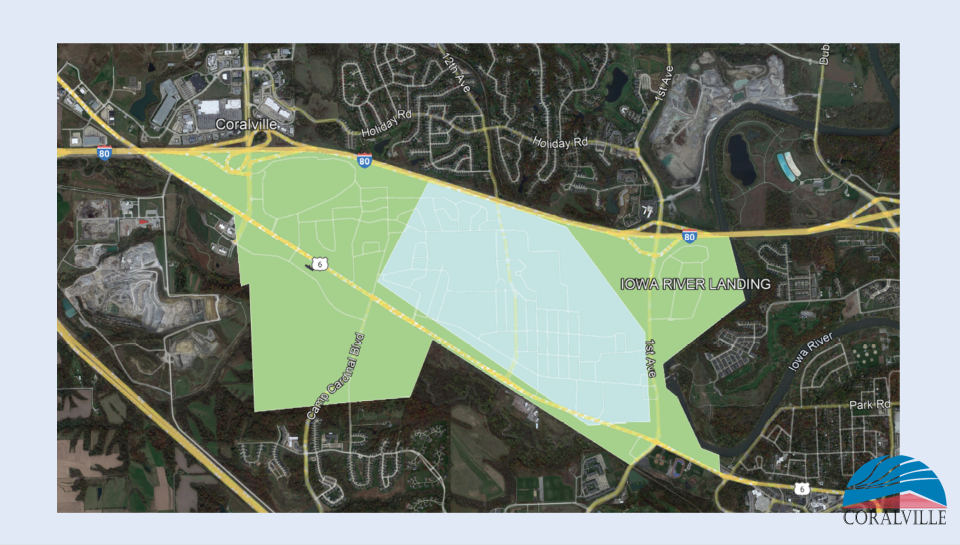$20 million Coralville Utility Project aims to limit power outages by moving, burying lines

Keeping the lights on.
That’s the goal of a nearly $20 million project meant to reduce power outages and increase safety in Coralville.
The Ulitiliy Resilience Project will take aim at lowering Mid-American's power lines into the ground and repositioning lines from backyards to the front.
Most of the initiative will be funded by federal grant money from the Federal Emergency Management Agency's Building Resilient Infrastructure in Communities program. Coralville’s $13.87 million application for its resiliency program was one of 14 proposals and the second most expensive Iowa application selected for further review by FEMA in August.
The agency is expected to decide whether to fund the project by the end of the year.
The city held a public meeting in January to let residents know they had applied for the grant, seeking additional feedback. If the money is approved, Coralville will hold additional public meetings once project development begins.
A memorable storm for the wrong reasons
The devastating 2020 derecho inspired the Utility Resilience Project, Coralville deputy city administrator and project lead Ellen Habel said. Although the storm did not hit Coralville as hard as other places, Habel said it revealed glaring issues with the city's ability to endure severe weather and keep fueling power to homes and businesses.
The derecho left some residents without electricity for more than a week. Lowering the chance for weather-induced power outages became a serious need.
Many of the homes that were impacted most during the 2020 derecho had power lines in their backyards that were blown out of place by high winds. In many cases, that same debris created significant roadblocks, preventing emergency crews from restoring power promptly.
“People are losing food in their refrigerators and freezers, they may have medical equipment they can't use, which was a really serious issue,” Habel said. “Air conditioning or in the winter, heating, is down. If you're working or learning from home, that's probably out. So in communications, more and more, we rely on power for that.”
Those same problems also reared their head during a recent spring storm that produced a tornado.
Power lines will start moving next summer
Habel said on-the-ground work will begin next summer if the funding application is approved. Officials estimate that the project will be completed within a two-year time frame.
Much of the power line burial will be done in the city’s older neighborhoods, south of Interstate 80 in the MidAmerican service area, with most of the movement done between 1st Avenue and 22nd Avenue.
Pulling lines out of backyards and burying them underground will also help revitalize the in-town tree population, which is often trimmed near power lines as a safety measure.
“You get those lines and poles out of yards, it really opened up sightlines and people can plant more trees because they're not worried about them hitting the lines,” Habel said. “You're going to get a better tree canopy and better habitat for birds. I think it's really positive from those aspects as well. We all know trees have lots of benefits as far as cooling and oxygen and a better natural environment.”
The utility project will get a boost from $6 million in state grants, while MidAmerican assistance will keep homeowners from paying into the project.

Ryan Hansen covers local government and crime for the Press-Citizen. He can be reached at rhansen@press-citizen.com or on X, formerly known as Twitter, @ryanhansen01.
This article originally appeared on Iowa City Press-Citizen: Coralville's $20 million utility project looks to keep the lights on

